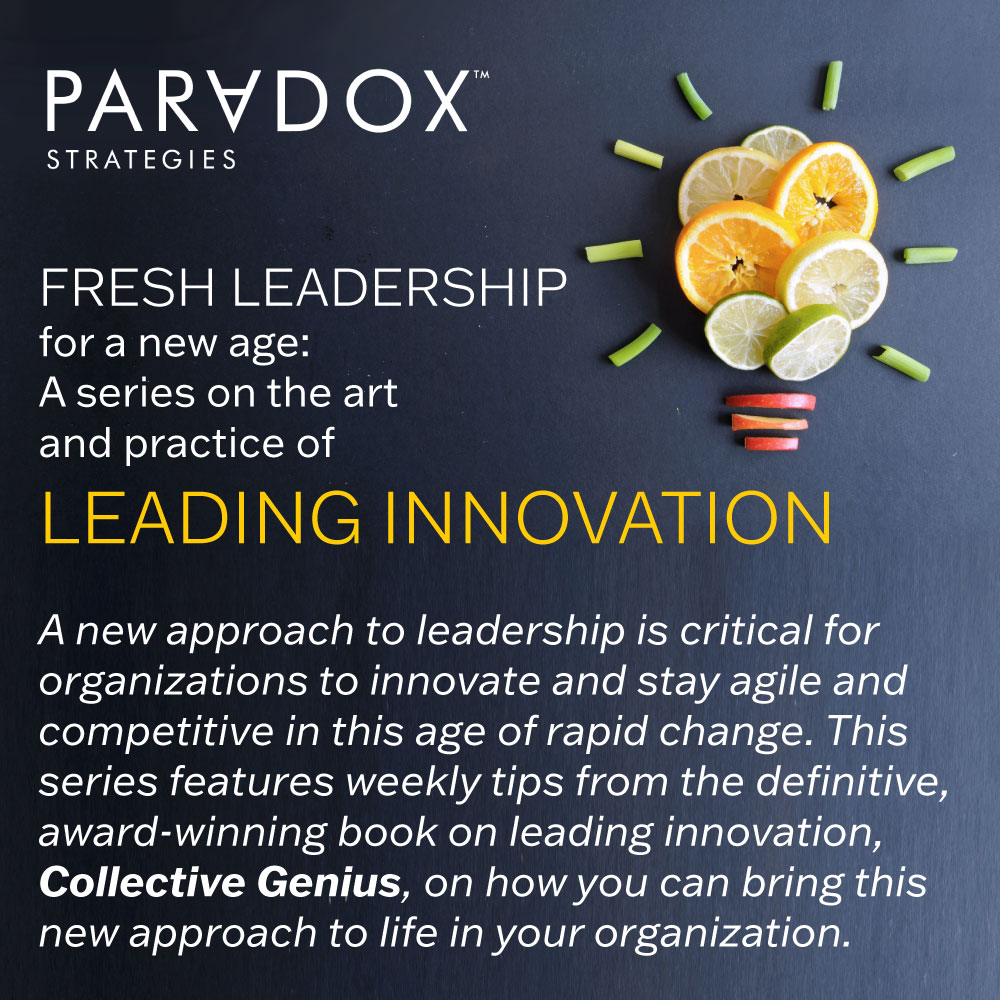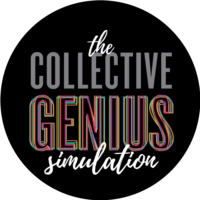
 Leading innovation: How to Use learning (week 4)
Leading innovation: How to Use learning (week 4)
To lead innovation with learning, focus on developing broad skills through the flow of work.
Traditional leadership:
The conventional view has been that, as a leader, you see learning & development as an individual endeavor with the focus on improving technical skills.
A fresh approach:
Our research shows new-era leaders embrace learning as a collective activity with the focus on acquiring and developing broad skills through the flow of work with others.
Bring it to life:
- Model life-long learning and share trends and insights with your team; keep apprised of happenings in other industries; live on the cutting-edge.
- Be curious about your employees’ interests and their work. Connect them to people and knowledge (e.g. books, articles, resources) that can catalyze their interests and work.
- Create stretch assignments and opportunities for employees to rotate or work in different areas.
- Provide your employees with exposure to learning opportunities beyond the organization, sector, or geography
- Create forums for intellectual exchange, to explore fresh ideas and share resources
- Bring new knowledge into the organization. Be connected to other parts of the ecosystem (e.g. private sector, public sector, academia)
- Encourage employees from across the organization to experiment and pilot projects together
Next week: Responsibility
Be personally invested in your team ‘s success and the organization’s success.
Innovation solutions from Paradox Strategies
 Our Collective Genius simulation and learning journey is designed to help leaders inspire action, nourish creativity, and build a culture of innovation. We also offer keynotes and our proprietary innovation diagnostic assessments re:Mind™ and re:Route™ as first steps in developing the mindset, culture, and capabilities of innovative organizations. Contact us via the form below if you would like to know how to bring these great tools to your organization.
Our Collective Genius simulation and learning journey is designed to help leaders inspire action, nourish creativity, and build a culture of innovation. We also offer keynotes and our proprietary innovation diagnostic assessments re:Mind™ and re:Route™ as first steps in developing the mindset, culture, and capabilities of innovative organizations. Contact us via the form below if you would like to know how to bring these great tools to your organization.




